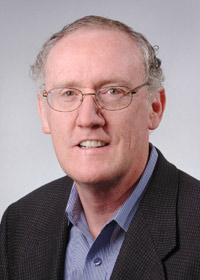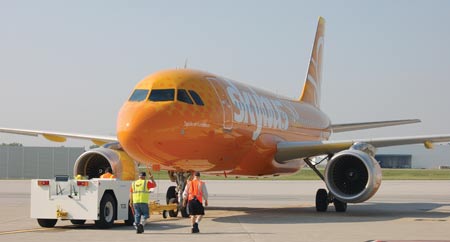Skybus is making rock bottom-priced fares its main selling point in the battle for passenger numbers
Skybus, a four-month-old US startup, is building up a national route system by looking for airports that are in effect alternatives to the established alternatives. Take for instance its East Coast destinations: Skybus serves Richmond, about 100 miles south of Washington, rather than Baltimore/ Washington International that has been the low-fare alternative to the two main Washington airports.
In New England, rather than choosing an established alternative to Boston Logan such as Manchester, as Southwest did a decade ago, Skybus instead chose Pease airport in Portsmouth, more than 50 miles from Logan.
 Skybus co-founder Bill Diffenderffer (pictured) explains: “We’re creating new markets. We believe our fares are so low that we are attracting people who have very often never flown before and who are willing to drive to a new and unfamiliar airport.” The airline’s selling point and appeal to the public is that fares start at $10 each way and it reserves at least 10 seats on each flight for tickets at that price while its other fares do resemble traditional airline pricing structures, very few are higher than $100 each way.
Skybus co-founder Bill Diffenderffer (pictured) explains: “We’re creating new markets. We believe our fares are so low that we are attracting people who have very often never flown before and who are willing to drive to a new and unfamiliar airport.” The airline’s selling point and appeal to the public is that fares start at $10 each way and it reserves at least 10 seats on each flight for tickets at that price while its other fares do resemble traditional airline pricing structures, very few are higher than $100 each way.
He says that fares run about 65% below legacy fares and are also competitive with fares on Southwest – which also serves Skybus’ home base at Columbus, Ohio and some of its other markets. Skybus’ strategy is to “get people who didn’t want to fly, to fly. We keep telling the big airlines like Southwest or AirTran that we’re not trying to steal their passengers, that the people we want are new customers and new business”.
All Skybus fares are one-way, and the airline does not offer connecting fares. In fact, he says, he does not assume significant numbers of connecting passengers, even though some Skybus customers will make a transcontinental trip by changing in Columbus for a flight between, say, San Diego and Fort Lauderdale. The airline charges for food, for checked bags and for as many ancillary services as it can, a strategy that is an admitted replication of the Allegiant Travel approach. “We think very highly of them” Diffenderffer says of Las Vegas-based Allegiant.
Diffenderffer says that the Skybus airport strategy is based on a very broad concept of catchment areas by assuming that people will drive considerable distances to get to an airport with its low-fare service.
The lure of low fares
Its home base is the political and geographical centre of Ohio. Columbus, says Diffenderffer, is within 100 miles of 6.7 million people, which is analogous in size to the Atlanta area. He says that the lure of very low fares draws people from the southern part of the state, people who live near Cincinnati airport (which is in fact in northern Kentucky) or who are willing to make the drive from the state’s medium-sized cities such as Dayton or even Cleveland. “Even with rising automobile fuel prices when people calculate the savings for a family trip, they think we’re worth the drive,” he says.
Some Skybus’ airport choices reflect this concept. On the West Coast, its most ambitious choice is the Bellingham airport, which lies between the major Seattle/Tacoma International Airport and the Canadian border. Of the four new markets Skybus announced in late September for a December startup, two are designed to draw passengers from major cities as far as 100 miles away.
For instance, its choice of Chattanooga, a city on the Tennessee/Georgia border, gives the airline access to a population area that includes Atlanta’s northern suburbs. An hour’s drive of the Atlanta metropolitan area, Chattanooga airport will be able to draw passengers who would otherwise drive at least an hour to reach Atlanta Hartsfield/Jackson airport on the south side of the city. Similarly, its planned service for Gulfport/Biloxi airport in southern Mississippi should draw passengers from New Orleans, about 70 miles away.
Unlike some of the other Skybus airports, Chattanooga and Gulfport have scheduled services, while another December startup, Punta Gorda airport in Florida, does not. This general aviation facility, officially the Charlotte Country Airport, is in southwest Florida, about 40 miles south of Sarasota and is completing a 16,000-square-foot terminal that helped lure Skybus.
The airport will be the third general aviation airport that Skybus will serve, after the Westover airport near Springfield, Massachusetts, about 30 miles from Bradley International airport near Hartford and St. Augustine airport in northwest Florida, about 40 miles from Jacksonville. The other new airport that Skybus announced on 18 September is Milwaukee, and Skybus is counting on drawing travellers from the Chicago metropolitan area to its south as well as from Wisconsin cities.

Read more chief executive interviews
Source: Airline Business



















